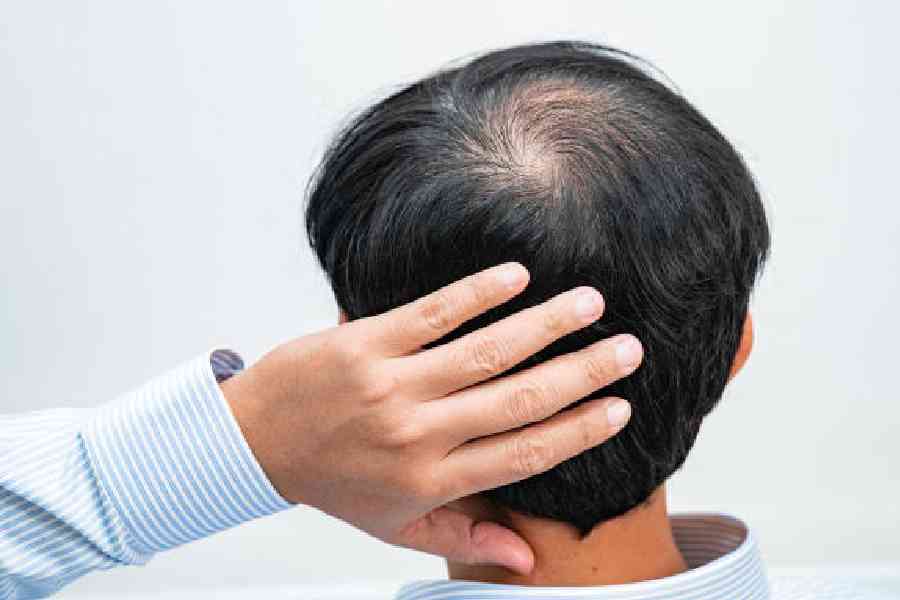No man looks forward to the day when he will look in the mirror and have to admit that his widow’s peak is real. Or acknowledge that he can feel the breeze on the crown of his head.
Up to half of men will experience some form of male-pattern baldness by the age of 50, and still more after that. Though our genetics and hormones play major roles in hair loss, the exact mechanisms aren’t fully understood, which is why treatments to stem and reverse it remain imperfect, said Dr Arash Mostaghimi, vice-chair of clinical trials and innovation in the dermatology department at Brigham and Women’s Hospital in Boston in the United States.
However, there are a few things you can do both before and after that fateful day comes. Here is what you need to know about what works, what’s new and what to avoid.
Why it happens
Typically, men’s hair loss occurs because of an increase in an enzyme in the scalp that converts testosterone to a more potent form, called dihydrotestosterone (or DHT), Dr Mostaghimi said. The reasons that one man might have more DHT than another are not well understood, but it has a genetic component.
When men have too much DHT in their scalp, the hormone initiates a complex process that leads to hair miniaturisation, in which hairs and follicles begin to shrink.
If you’re worried about hair loss, the first step is to make an appointment with a dermatologist. Dermatology is a big specialty; find a doctor who’s passionate about hair loss, said Dr Danilo C. Del Campo, a dermatologist in Chicago, US, who specialises in hair loss.
First-line medications
Dermatologists generally recommend two drugs approved by the US Food and Drug Administration: minoxidil (also known by its brand name Rogaine) and finasteride (aka Propecia).
Minoxidil is the best known. “It does work to grow hair,” Dr Del Campo said — when patients apply it at least daily and preferably twice a day. It comes in a foam or drops. He recommended using a formulation without propylene glycol, which can irritate the scalp.
It takes a few months to regrow mature hair, but topical minoxidil doesn’t work well for everyone and experts said that many dislike having to apply it so often. Also, as with any other hair-loss treatment, if a patient stops taking it, he will lose any previous gains and his hairline will continue retreating, Dr Mostaghimi said.
Another option is taking minoxidil in pill form, an off- label therapy that some dermatologists have used for years. However, pills cause hair to grow indiscriminately, including on the face or in the armpits, though it varies by patient, Dr Del Campo said.
Finasteride is approved in pill form for male hair loss with a prescription. Taking oral finasteride holds a small risk of erectile dysfunction, Dr Del Campo said, which usually ends when a patient stops taking it. Finasteride is also available as a spray or drops. Topical formulations are not approved by the FDA but have become popular with online purveyors that may prescribe them using just an online survey.
There’s no reason to limit yourself. “It’s generally accepted that combination treatment works better than anything by itself,” said Dr Carolyn Goh, an associate clinical professor of dermatology at UCLA Health, US. That’s because these medications seem to work via different pathways and have different strengths.
Secondary therapies
There are a few other options, but experts say they are not stand-alone therapies and should be used alongside medicines. One option is platelet rich plasma (PRP) injections. In this process, the blood of a patient is drawn, its plasma separated and injected back into his scalp.
One recent meta-analysis concluded that PRP had promise for some patients, but it
was hard to say that with confidence, because the studies had all been performed differently. Experts like Dr Del Campo didn’t recommend it as a stand-alone treatment.
Another option is low-level laser light therapy — often in the form of helmets or combs.
Hair transplants
Some dermatologists consider hair transplants the gold standard of hair restoration. The technology has come a long way over the last 25 years from the days of hair plugs, doctors said. During a hair transplant, hair follicles are removed from one place and relocated where it is needed. This can be done either by removing a strip from the back of the scalp, or relocating individual follicles from around the head.
The process isn’t without its caveats. First, a transplant often doesn’t provide instant results. And the original hairline still continues to recede, so the skill of the surgeon is important. Patients will see the best results when they continue to use medication, too, Dr Goh said. Transplants are also the most expensive option.
NYTNS











